When navigating the SEO labyrinth, small businesses often need help amplifying their online footprint. My expertise in maximizing on-page SEO techniques offers clarity with “10+ SEO Tips for Small Businesses”. These recommendations are customized to increase your business’s web presence.
Key tips include:
- Prioritizing Meta Tag Optimization: Keep these tags concise and keyword-rich.
- Harnessing Local SEO: A lifeline for businesses like boutiques or cafes.
- Investing in High-Quality Content: The cornerstone of effective SEO.
- Incorporating Alt Text in Images: This boosts SEO while enhancing accessibility.
- Speeding Up Website Performance: A fast site reduces bounce rates.

Consistency is your ally in SEO. Regular updates and staying informed about SEO trends are essential.
Consider Plerdy’s tool to improve strategy. User behavior analysis and conversion rate improvement are ideal with it. Plerdy helps you improve your SEO and stand out online by providing valuable visitor insights.
The Importance of SEO for Small Businesses
Small businesses often grapple with making a substantial impact in the bustling digital marketplace. SEO emerges as a critical ally, amplifying visibility and driving growth. Mastering SEO isn’t just beneficial for small enterprises—it’s imperative. This digital optimization serves as a magnet, pulling potential customers from the vastness of the internet directly to your digital doorstep.
Consider a local bakery: by harnessing the power of SEO, it transforms from a neighborhood haunt to a widely recognized brand. Keywords related to “artisan bread” or “custom cakes” help the business climb search engine rankings, ensuring that the bakery appears front and center when a potential customer seeks these treats. This visibility is the lifeblood of small business growth in a world where digital footprints often overshadow physical ones.
The synergy between SEO and business success is undeniable:
- Enhancing brand recognition and reach
- Boosting website traffic with targeted keywords
- Building trust through higher search engine rankings
- Facilitating connections with a broader audience
SEO isn’t just a strategy for a small business; it’s a growth accelerator. Each click, each search, and each ranking improvement translates into an opportunity to thrive in a competitive market. Igniting this growth engine, small businesses can carve out their unique space, standing tall amidst giants.
List of 10+ SEO Tips for Small Businesses
Reviewing the “10+ SEO Tips for Small Businesses” list, it’s clear that these nuggets of wisdom are goldmines for any entrepreneur looking to boost their online presence. Each tip is a stepping stone, paving the way for small businesses to climb the search engine rankings. It’s not just about sprinkling keywords; it’s a crafty blend of strategy and savvy, essential for anyone playing the digital chess game in today’s business arena.
Use Plerdy Tools
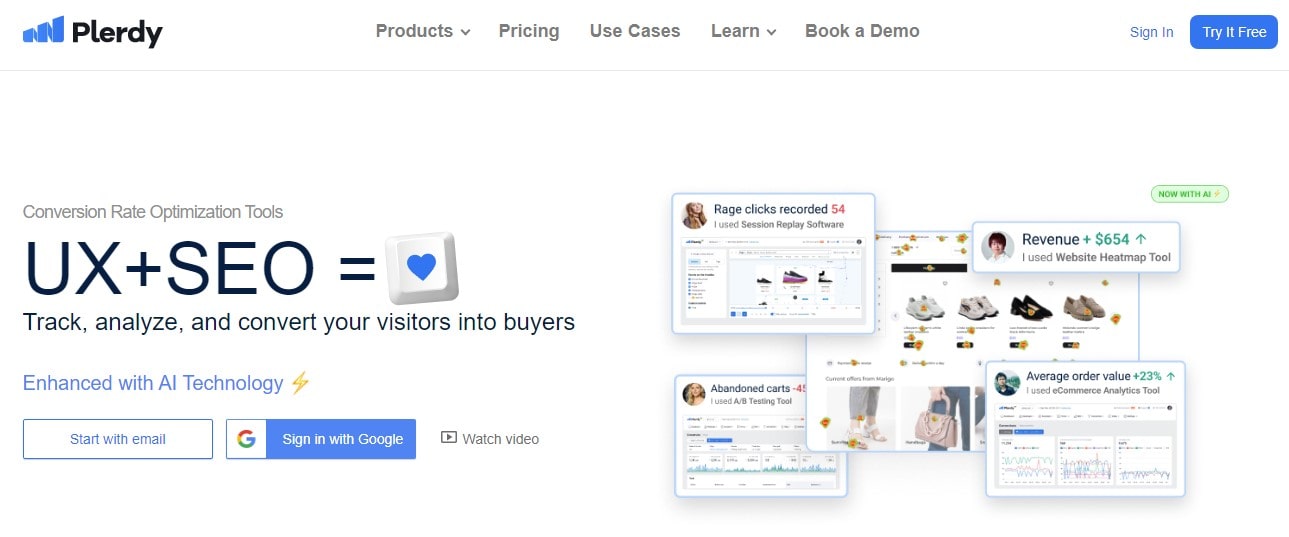
Plerdy gives small firms an SEO advantage. Businesses gain web visibility with this powerful tool.
- Enhanced SEO Insights: In-depth SEO analytics from Plerdy reveal user behavior and offer website optimization advice.
- Keyword Mastery: Elevate your business’s SEO game by harnessing Plerdy’s keyword-tracking capabilities. Real-time keyword ranking data keeps your firm at the top of search engine results.
- Competitor Intelligence: Plerdy equips you with the tools to monitor your rivals. Analyze competitor strategies, identify their tips, and adapt your SEO approach accordingly to outshine them.
- Conversion Finesse: Plerdy empowers you with conversion rate optimization (CRO) tips, enabling you to fine-tune your website for maximum impact.
- Tailored Solutions: Plerdy covers a lot of ground because it is flexible. With Plerdy’s personalized suggestions, online stores, blogs, and local service providers can all thrive.
With Plerdy’s SEO suggestions, your firm may thrive in the dynamic world of Internet marketing. Do not delay; plerdy has the potential to revolutionize your company.
Maximizing On-Page SEO Techniques
In the digital dance of modern business, on-page SEO leads the way, guiding businesses to the spotlight of online visibility. This intricate ballet of keywords, content, and website structure is more than a mere step—it’s a leap toward success. For businesses, on-page SEO is fine-tuning every web page element to sing in harmony with search engines.
Imagine a boutique specializing in vintage clothing. By meticulously optimizing each product page with descriptive, keyword-rich content, the boutique captures the essence of searches like “vintage evening gowns” or “retro leather jackets.” This strategic alignment ensures that when fashion enthusiasts hunt for unique pieces, this boutique pirouettes to the top of search results.
Key elements in the symphony of on-page SEO include:
- Crafting compelling and keyword-rich page titles
- Utilizing engaging, informative meta-descriptions
- Implementing strategic header tags for content organization
- Optimizing images with descriptive alt text
For any business, embracing these on-page SEO techniques isn’t just shuffling steps; it’s choreographing a performance that captivates search engines and customers. In the vast auditorium of the internet, where every business vies for attention, on-page SEO orchestrates a performance that attracts the audience and earns standing ovations from search engines. The result? A business that not only appears in search results but also resonates with its audience, turning casual browsers into loyal customers.
Implementing Effective Meta Tags and Descriptions
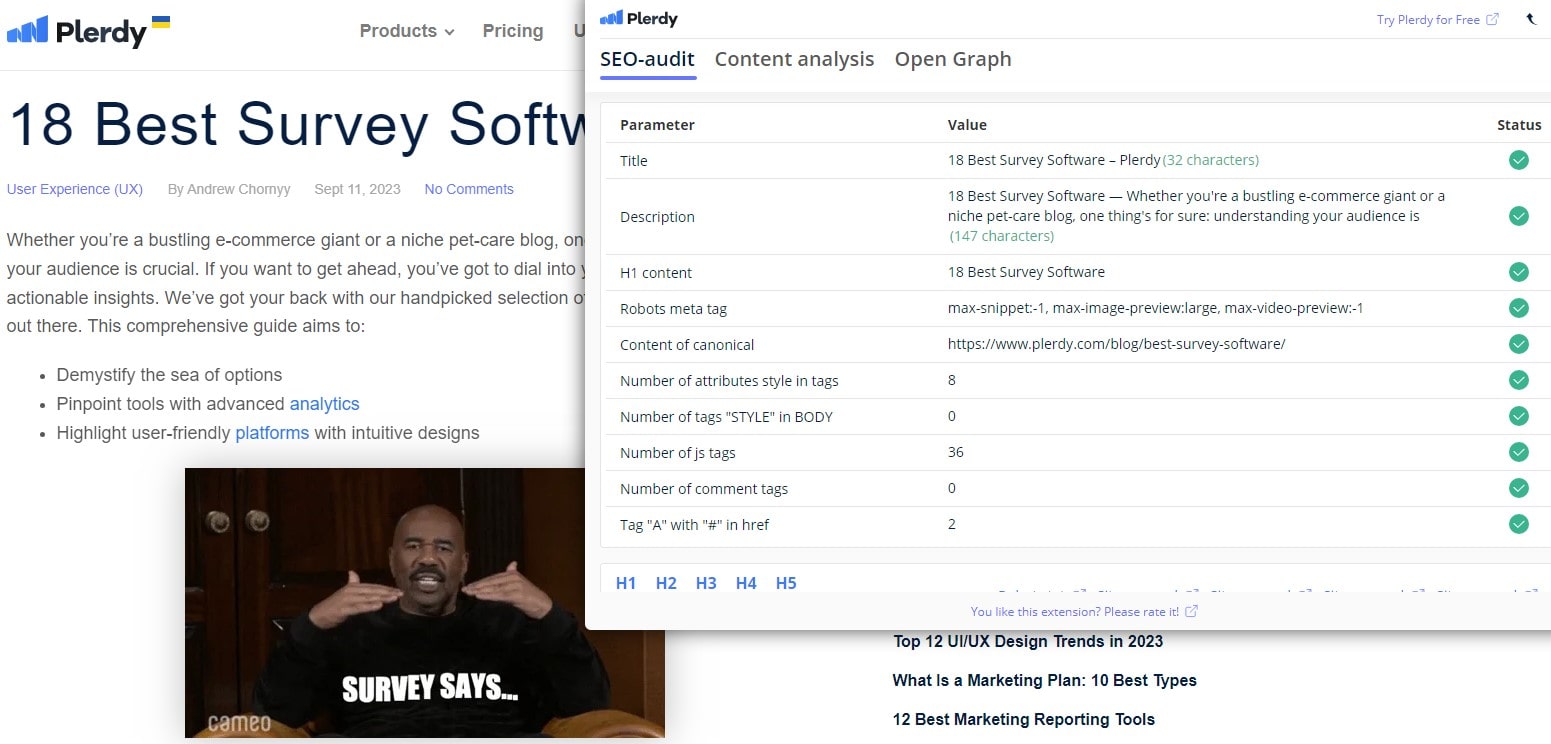
Meta tags and descriptions are like little whispers regarding search engine optimization (SEO). They tell both search engines and users what a website is all about. In the digital tapestry of business, these elements act as threads that connect and highlight a company’s presence in the vast online fabric. For businesses, mastering the craft of meta tags and descriptions is akin to setting the stage for an enthralling performance in the search engine arena.
Take a gourmet coffee shop, for instance. By infusing its meta tags with aromatic keywords like “artisan coffee blends” and “organic espresso,” it beckons coffee lovers scrolling through search results. The meta description, a brief yet enticing narrative, offers a snapshot of the shop’s unique offerings and inviting ambiance, drawing in potential customers.
In the art of implementing effective meta tags and descriptions, key strategies include:
- Crafting concise, compelling meta titles that encapsulate the page’s content
- Integrating target keywords seamlessly into meta descriptions
- Ensuring meta descriptions are inviting and accurately reflect the page’s content
- Regularly updating meta tags to align with evolving content and SEO trends
For any business, these SEO elements are not just about improving visibility; they’re about creating a resonating first impression. Meta tags and descriptions play a crucial role in today’s click-happy market. They subtly convey a business’s relevance and value, leading to increased audience engagement and the possibility of long-term relationships.
Utilizing Structured Data and Schema Markup
In the intricate web of SEO, structured data and schema markup are the silent power players, deftly orchestrating a business’s online narrative. As the unseen builders, their job is to arrange data so search engines can read and display well. For any business, leveraging this advanced SEO tool means stepping into the spotlight of search results with clarity and precision.
Picture a local bookstore using schema markup to detail its catalog. Each book becomes more than a title and author; it’s now a rich snippet in search results, complete with ratings, price, and availability. This visibility is like a beacon, guiding book lovers directly to the bookstore’s virtual shelves.
Among the many advantages of using schema markup and structured data for search engine optimization in company are:
- Enhanced visibility in search results through rich snippets
- Improved click-through rates due to more informative listings
- Precise communication of key business information to search engines
- Competitive edge in search results, especially for local businesses
In the modern SEO world, schema markup and structured data are more than simply tools; they are the creative forces behind every company’s web presence. They transform basic information into a vivid display, catching the eye of both search engines and potential customers. As businesses navigate the digital sea, these tools act as lighthouses, ensuring that their offerings are seen, understood, and sought after in the vast expanse of the internet.
Improving Site Speed and Performance
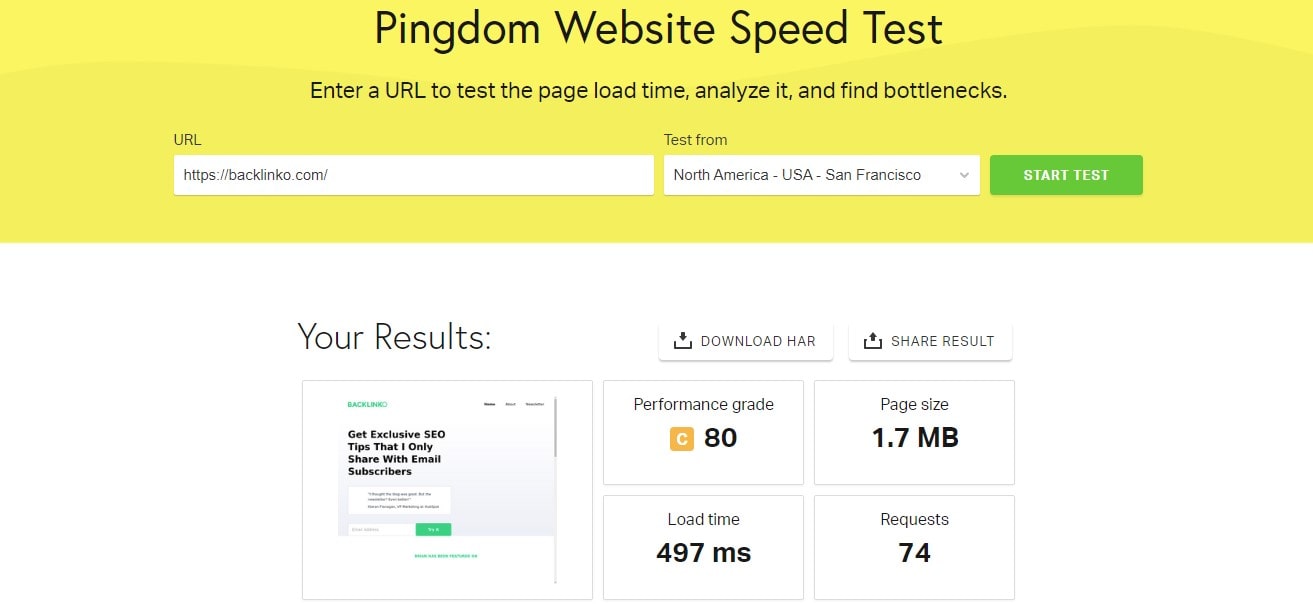
In the realm of digital commerce, speed reigns supreme. For businesses, a swift and seamless website is more than a convenience—it’s a cornerstone of success. In the SEO world, site speed and performance are not just about quick loading times; they provide an unparalleled user experience that keeps visitors engaged and returning for more.
Imagine an online fashion retailer: every second shaved off its site’s loading time translates into a smoother, more enjoyable shopping experience. This boosts customer satisfaction and positively impacts SEO, as search engines favor websites catering to quick and efficient user experiences.
Key steps to enhance site speed and performance include:
- Compressing images and videos to reduce load times
- Implementing browser caching for returning visitors
- Minimizing CSS, JavaScript, and HTML for streamlined performance
- Choosing a reliable web hosting service for optimal uptime and speed
For businesses, prioritizing site speed is akin to paving a high-speed highway for customer interactions. It’s a direct route to higher engagement, improved SEO rankings, and increased conversions. In today’s fast-paced digital landscape, businesses that invest in their website’s speed and performance set the pace, leaving competitors struggling to keep up. This commitment to speed elevates a business’s SEO strategy and solidifies its reputation as a user-centric, forward-thinking brand.
Engaging in Content Marketing for SEO
In the digital symphony of modern marketing, content is the melody that resonates with audiences, while SEO acts as the rhythm guiding its reach. For businesses, weaving these elements into a harmonious blend is not just strategy—it’s artistry. Engaging in content marketing for SEO is like composing a captivating tune that echoes across the vast halls of the internet, drawing in listeners far and wide.
Envision a boutique hotel crafting stories about local adventures and luxury experiences. Each tale, rich in keywords and local flavors, not only enchants potential guests but also serenades search engines, elevating the hotel’s visibility in search results.
Essential chords in this content marketing composition include:
- Creating valuable, informative content that addresses customer needs and interests
- Infusing content with strategically chosen keywords for SEO optimization
- Consistently updating the website with fresh, relevant content
- Utilizing diverse formats – from blog posts to videos – to engage different audiences
For any business, embarking on this content marketing journey is not just about filling pages with words. It’s about crafting narratives that resonate with people and search algorithms, creating a bridge between a business and its potential customers. This approach bolsters SEO efforts and establishes the business as a thought leader and a trusted voice in its niche. In today’s digital marketplace, a business’s ability to blend engaging content with savvy SEO practices is not just a tactic—it’s a vital component of digital success, turning passive browsers into engaged customers and loyal advocates.
Optimizing for Voice Search

In today’s SEO landscape, voice search stands out as a burgeoning frontier, where queries become conversations and keywords become questions. For businesses, tuning into this voice-activated world is not just about staying current—it’s about being a step ahead. Optimizing for voice search is akin to opening a new doorway that leads directly to enhanced visibility and engagement in the digital era.
Consider a local organic grocery store optimizing for voice search. When a customer asks their smart device for “the best organic produce near me,” the grocery store appears as a top result, thanks to its voice search-optimized content. This optimization goes beyond mere keywords; it delves into the natural language patterns of potential customers.
Essential strategies for optimizing for voice search include:
- Incorporating long-tail keywords that mirror natural speech patterns
- Focusing on local SEO to capture “near me” queries
- Ensuring website content answers common questions related to the business
- Optimizing for featured snippets to increase chances of being the top voice search result
For businesses, venturing into voice search optimization is more than an SEO tactic; it’s embracing a shift in how consumers interact with the digital world. This approach elevates a business’s SEO game and connects it more intimately with its audience. In an era where speaking to devices is as natural as typing, businesses that adeptly tune their SEO strategies to this evolving trend are not just heard—they are listened to, remembered, and preferred.
Incorporating Video Content for Enhanced SEO
In the vibrant tapestry of digital marketing, incorporating video content emerges as a vivid thread; weaving added texture into the fabric of SEO strategies. For businesses, this isn’t just about adding videos—it’s about enriching the narrative of their brand, making it more accessible and engaging in the SEO-driven digital bazaar.
Imagine a small artisan coffee shop. By integrating videos showcasing the journey from bean to cup, the business captivates coffee enthusiasts and enhances its SEO. Embedded on the website, these videos serve as magnets, drawing both search engines and coffee lovers with their dynamic and visually appealing content.
Crucial steps in leveraging video for SEO include:
- Embedding keyword-rich titles and descriptions in video content
- Using transcripts and captions for better indexing by search engines
- Hosting videos on the business website to drive traffic
- Sharing videos across social media platforms to increase reach and engagement
In today’s digital milieu, a business’s decision to integrate video into its SEO strategy is akin to adding a new dimension to its online presence. This approach boosts SEO efforts and paints the brand in a more relatable and engaging light. As the digital world increasingly favors video content, businesses that skillfully blend this medium into their SEO plans tell their story more effectively and carve out a niche in the crowded digital marketplace, resonating with audiences and search engines alike.
Understanding and Applying Google’s Algorithm Updates
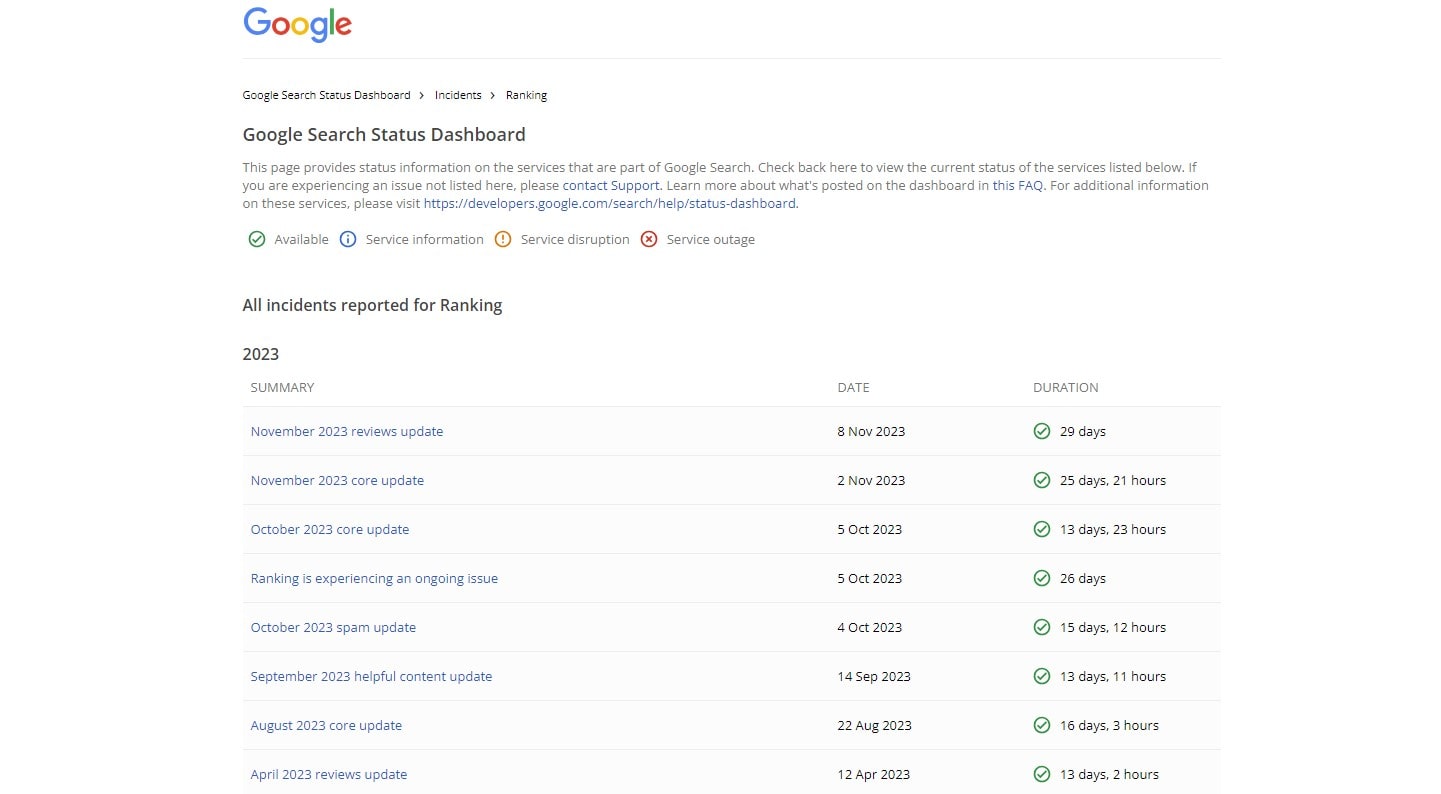
Navigating Google’s algorithm updates is like charting a course through ever-shifting seas. For businesses, understanding and applying these updates is crucial for survival and thriving in the competitive tides of SEO. These algorithm updates, often shrouded in mystery, are the compass by which a business must steer its SEO strategy, ensuring it remains on course to increased visibility and success.
Consider a local fitness center. With each Google update, it fine-tunes its website, focusing on user experience, mobile responsiveness, and quality content. This adaptability doesn’t just keep the fitness center afloat; it propels it forward in search rankings, attracting more members.
Key actions to stay aligned with Google’s algorithm updates include:
- Regularly auditing website content for quality and relevance
- Ensuring mobile responsiveness for a seamless user experience
- Prioritizing site speed for quick and efficient browsing
- Building natural, high-quality backlinks to boost site authority
For any business, these updates are guidelines and lifelines, ensuring their SEO strategies align with what Google values most. By staying abreast of these changes and adjusting tactics accordingly, businesses can confidently navigate the waters of SEO. It’s not just about reacting to changes; it’s about proactively shaping an SEO strategy that withstands the test of time and tide. In the ever-evolving world of SEO, businesses that stay informed and agile in the face of Google’s algorithm updates don’t just survive—they thrive, riding the waves of change to new heights of digital visibility and success.
Mastering SEO-Friendly Blogging Practices
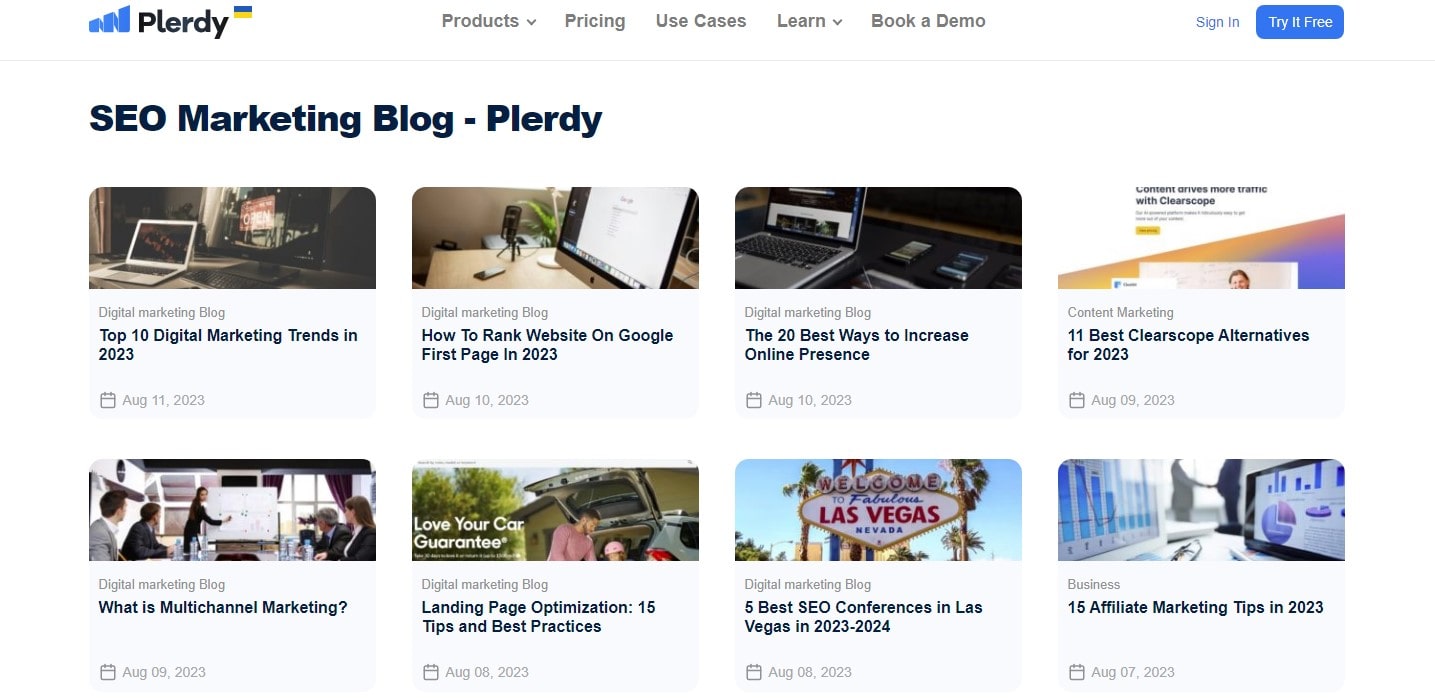
In the digital landscape, mastering SEO-friendly blogging is akin to cultivating a lush garden in the vast internet wilderness. Each blog post is a seed for businesses, potentially blossoming into increased visibility and customer engagement. In SEO, a well-tended blog is not just a collection of words; it’s a vibrant ecosystem teeming with opportunities for growth and connection.
Imagine a boutique travel agency. Through SEO-friendly blogging, it shares captivating stories of hidden destinations and travel tips, each post meticulously infused with keywords like “exclusive getaways” or “luxury travel advice.” This strategy transforms the blog into a beacon, guiding adventure seekers to the agency’s digital doorstep.
Essential practices for SEO-friendly blogging include:
- Crafting engaging, high-quality content that resonates with the target audience
- Strategically placing relevant keywords throughout the content
- Using headers and meta tags effectively to enhance readability and SEO
- Regularly updating the blog with fresh, relevant content
- Incorporating internal and external links to boost SEO and provide value
For businesses, these blogging practices are not mere tasks; they are the keystones of a robust online presence. This approach elevates a business’s SEO strategy, weaving a narrative that engages search engines and readers. Businesses who masterfully use search engine optimization (SEO) blogging in their strategy outperform their competitors in the dynamic digital marketing landscape by increasing their search engine rankings and standing out from the crowd with an honest and distinctive voice.
Effective Use of Google My Business
Harnessing the power of Google My Business (GMB) is like unlocking a treasure chest for local SEO and business visibility. In today’s digital-first world, a well-optimized GMB listing guides potential customers to a business’s doorstep. For businesses, this tool is not just a directory listing; it’s a dynamic platform to showcase their brand, offerings, and what sets them apart.
Picture a family-owned restaurant. Through effective use of GMB, it not only marks its location on the digital map but also shares tantalizing images of its dishes and updates about special events, and it gathers valuable customer reviews. This multifaceted approach elevates its local SEO, making it a go-to spot in online searches for “best family dining” in the area.
Key strategies for optimizing GMB for enhanced SEO and business growth include:
- Ensuring all business information is accurate, comprehensive, and up-to-date
- Regularly posting updates and offers to engage potential customers
- Encouraging and responding to customer reviews to build trust and visibility
- Adding high-quality photos and videos to showcase the business
- Utilizing GMB insights to understand customer interaction and improve listings
For businesses, mastering GMB is not just about being found; it’s about standing out. In the crowded digital marketplace, a well-maintained GMB listing acts as a digital storefront, inviting, informing, and engaging customers. As search trends increasingly favor local and personalized results, businesses that skillfully leverage GMB boost their SEO efforts and connect more deeply with their local community, laying a foundation for lasting growth and success.
Conclusion
In wrapping up “10 SEO Tips for Small Businesses”, it’s clear that effective SEO is not just a strategy but a continuous journey for any business looking to thrive online. Despite their apparent simplicity, these suggestions are potent instruments that can alter the internet perception of your firm.
Key takeaways include:
- Consistent Content Updates: Keep your site fresh and relevant.
- Balanced Keyword Usage: Optimize without overstuffing.
- Responsive Web Design: Cater to all device users.
- Strategic Link Building: Cultivate quality backlinks.
- Regular SEO Audits: Stay ahead of the curve.
SEO involves more than adding “sushi” to your web pages for a sushi restaurant. Making content that speaks to sushi fans, optimizing your site for local searches, and ensuring it’s easy to use on any device are all part of it. When starting a tech company, using niche-relevant keywords and updating your blog often to demonstrate your knowledge is important.
Keeping up with these tips ensures your business remains visible and relevant. Consider tools like SEMRush or Yoast for in-depth SEO analysis and optimization for an extra edge. Your SEO journey is continuous – embark on it with confidence and creativity.
